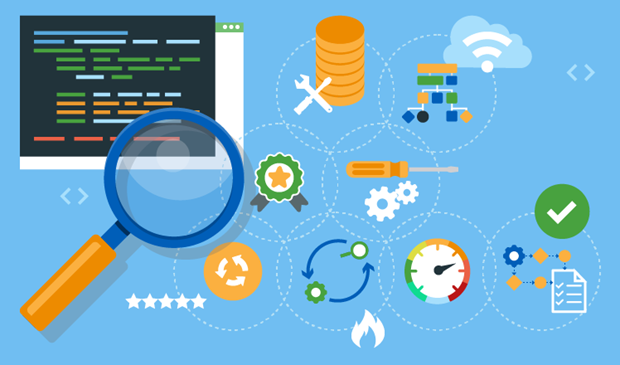


Software development is changing due to the emergence of new technologies and methodologies of development process organization. And software testing transforms respectively, as it should match technological and methodological advances to ensure the high quality of software.
It is highlighted IT trends that fuel changes in the QA domain and summarized the emerging software testing trends in this article.

The following tech trends will persist through 2020 inducing changes in test process organization, expanding the range of tested application types, creating demand for new QA engineers’ skills, and thus shaping up a new face of software testing.
Businesses continue to undergo intense digital transformation and become more dependent on technology. This sets high requirements for the reliability and stability of the software. Hence, the importance of software quality assurance increases as well. The share of IT budgets spent on QA has grown by 35% since 2015 and is predicted to face another increase in 2020. At the same time, digital transformation presupposes experimenting with digital features, which calls for the agility and flexibility of the development and QA processes.
As a result, quality assurance faces contradicting demands for stability and flexibility, which sets a challenge for QA managers. They continue to search for new, non-trivial ways of setting QA processes in a way that enables meeting both requirements.
Organizations adopt DevOps practices and establish CI/CD pipelines, which presuppose delivering small chunks of software is fast and frequent iterations. This IT trend makes QA teams respond in two ways. First, test engineers face the need to adopt a shift-left approach and start testing activities as early in the software delivery cycle as possible. Second, test teams are required to build and maintain result-oriented collaboration with development teams, who are also involved in the QA process. The development teams create and run unit tests, while test teams validate software at the API and UI layers.
With scalability in mind, an increasing number of businesses move data storage and processing to the cloud. According to the survey conducted by Sogeti, 76% of all applications are cloud-based today. At the same time, there is an increase in the number of organizations adopting IoT, as this technology provides access to previously unavailable enterprise and customer data and allows organizations to make informed business decisions based on this data. The same survey by Sogeti reports that 97% of the examined enterprises have adopted IoT solutions in some form.
Quality assurance for cloud-based and IoT applications calls for much more specialized skills of QA engineers and requires QA teams to better understand these apps’ implications on organizations’ business processes.
Software testing trends can be grouped into two categories based on the aspect of the testing process they affect:
With reasonable test automation, test teams can achieve the required test coverage while meeting stringent iteration deadlines. Test automation requires consolidated effort from the development, testing and operations teams as it means automating not only functional test cases but also pre- and post-testing activities, for example, test environment setup and test data provisioning. It is important to note that an increased share of automation doesn’t eliminate manual testing. Such testing types as exploratory and usability testing continue to be performed manually.
In 2020, performance engineering is expected to gradually replace performance testing techniques. The focus of performance engineering is on analyzing how to prevent and forecast software performance issues. A performance engineer should be involved from the initial software development stages to ensure that the software’s design and architecture won’t cause performance defects in the future. Such a shift requires sufficient code, database schema, and queuing theory understanding from an engineer.
In software quality assurance, it may be possible to apply AI for:
Although there’s enthusiasm for AI-driven testing and the potential of using AI in quality assurance is promising, it is still an emerging trend. The knowledge, skills, and expertise required are still lacking in many organizations.
Basic testing types (functional, performance, compatibility, security and other types of testing) are executed with regard to the SaaS peculiarities, such as frequent software updates, multi-tenancy, and opportunities to tune a unified SaaS solution to multiple tenants’ specific business logic. For instance, during functional testing, a test engineer should not only verify the solution’s default functionally against the requirements specification but also test configuration use cases.
Thorough data warehouse and business intelligence testing should ensure the sleek functioning of data-centric applications and ETL (extract, transform, load) processes. Performing these types of testing requires QA engineers to acquire new knowledge, for instance, understanding of data warehousing concepts, architectures, and processes, knowledge of SQL query scripts and ETL mapping documents.
IoT testing is performed at multiple layers of an IoT architecture, such as a layer of smart things, a network layer, a cloud server layer, and a layer of user applications. In an average IoT testing process, the following types of testing are implemented:
The emergence and further spread of new technologies and methodologies to software development set a range of requirements for software quality control. The testing process adapts to the new reality in two ways: there emerge new approaches to the software testing process organization and the objects of testing become more diverse. To stay up-to-date, QA professionals should be ready to learn new software testing technologies and acquire new skills and competencies.

